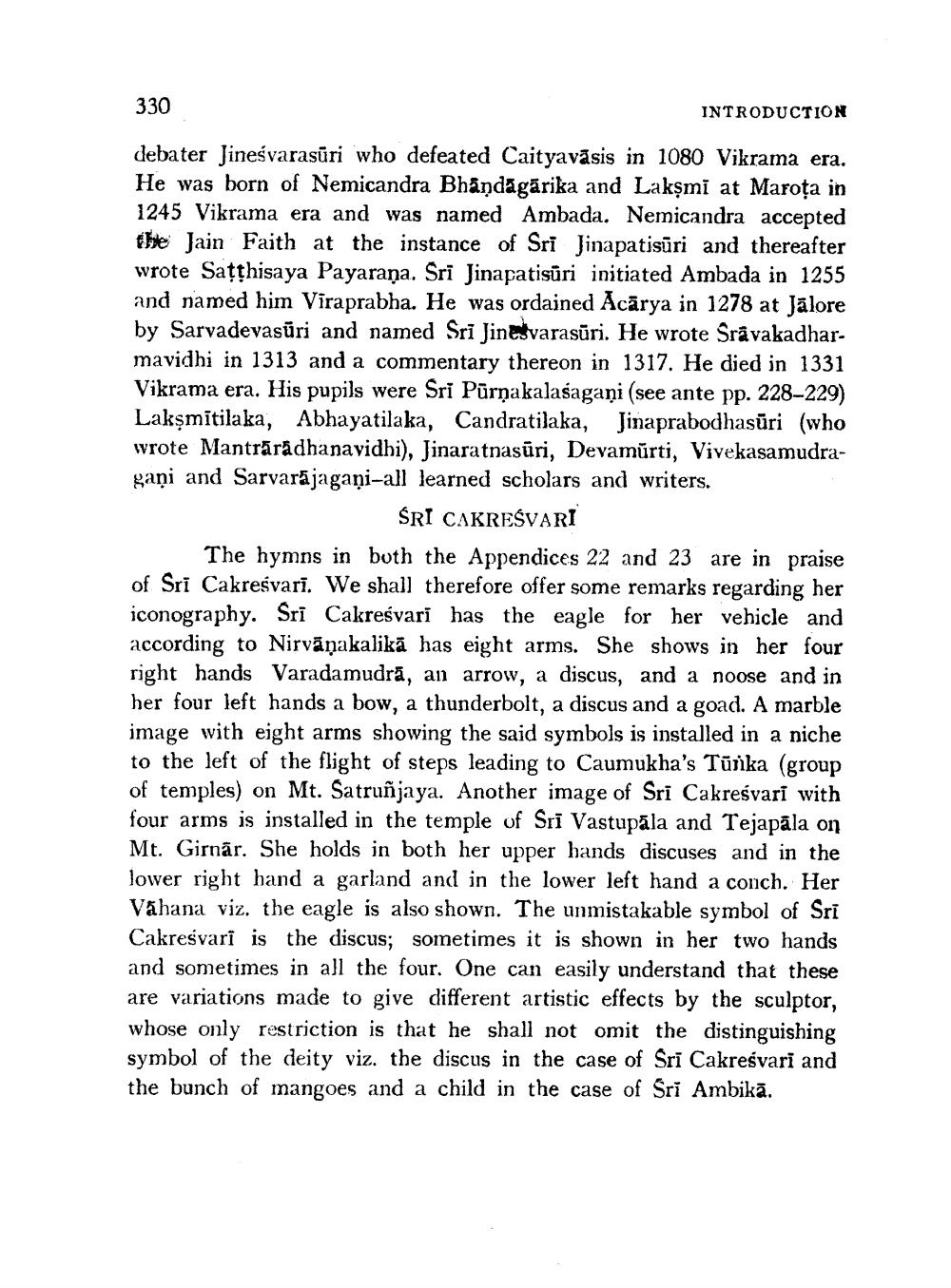________________
330
INTRODUCTION
debater Jinesvarasüri who defeated Caityavāsis in 1080 Vikrama era. He was born of Nemicandra Bhåndagārika and Lakşmi at Marota in 1245 Vikrama era and was named Ambada. Nemicandra accepted the Jain Faith at the instance of Sri Jinapatisūri and thereafter wrote Saţthisaya Payaraņa. Sri Jinapatisūri initiated Ambada in 1255 and named him Viraprabha. He was ordained Acārya in 1278 at Jālore by Sarvadevasūri and named Sri Jinesvarasūri. He wrote Sravakadharmavidhi in 1313 and a commentary thereon in 1317. He died in 1331 Vikrama era. His pupils were Sri Pūrņakalasagani (see ante pp. 228-229) Lakşmitilaka, Abhayatilaka, Candratilaka, Jinaprabodhasūri (who wrote Mantraradhanavidhi), Jinaratnasūri, Devamúrti, Vivekasamudragaại and Sarvarājagaņi-all learned scholars and writers.
ŚRI CAKREŚVARI The hymns in both the Appendices 22 and 23 are in praise of Sri Cakreśvari. We shall therefore offer some remarks regarding her iconography, Sri Cakreśvari has the eagle for her vehicle and according to Nirvānakalikā has eight arms. She shows in her four right hands Varadamudrā, an arrow, a discus, and a noose and in her four left hands a bow, a thunderbolt, a discus and a goad. A marble image with eight arms showing the said symbols is installed in a niche to the left of the flight of steps leading to Caumukha's Tūjika (group of temples) on Mt. Satruñjaya. Another image of Sri Cakreśvari with four arms is installed in the temple of Sri Vastupāla and Tejapāla on Mt. Girnār. She holds in both her upper hands discuses and in the lower right hand a garland and in the lower left hand a conch. Her Vähana viz. the eagle is also shown. The unmistakable symbol of Sri Cakresvari is the discus; sometimes it is shown in her two hands and sometimes in all the four. One can easily understand that these are variations made to give different artistic effects by the sculptor, whose only restriction is that he shall not omit the distinguishing symbol of the deity viz. the discus in the case of Sri Cakreśvari and the bunch of mangoes and a child in the case of Sri Ambikā.




